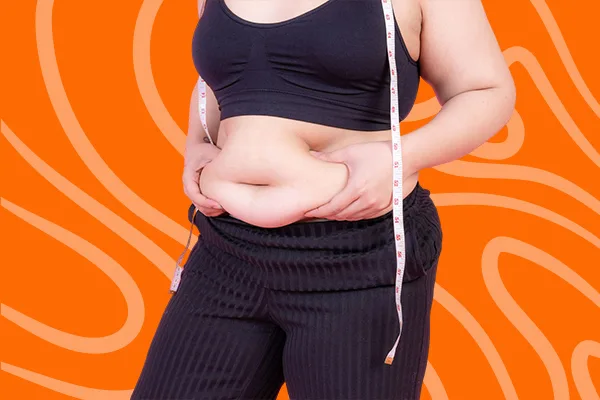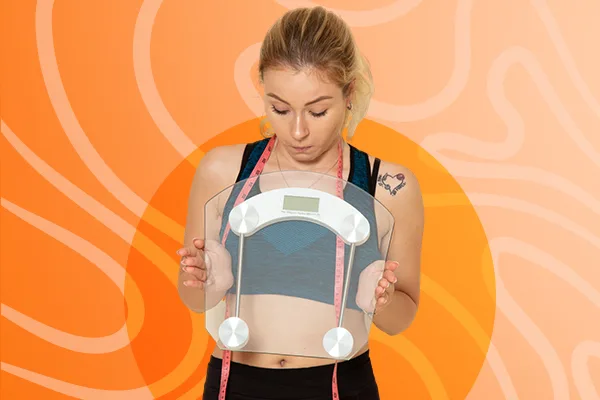Why Does Body Fat Distribution Matter More Than Total Fat?
Body fat distribution—not just how much fat you have—plays a major role in your health. Visceral fat around the abdomen (apple shape) raises the risk of heart disease, diabetes, and inflammation, while fat stored in hips and thighs (pear shape) is less harmful. Key takeaways:
- Visceral fat is more dangerous than subcutaneous fat.
- Waist-to-hip ratio is a better predictor of health risk than BMI.
- Genetics, hormones, age, and lifestyle shape your fat distribution.
- Exercise, sleep, stress management, and diet can help reduce harmful fat.
Understanding body fat distribution gives a clearer picture of health than weight alone.
When it comes to health and fitness, most of us tend to fixate on the number we see on the scale. But that number doesn’t tell the full story. What really matters is where your body stores fat. This is the essence of body fat distribution—a factor that can tell us a lot more about our health than total body fat alone.

What Is Body Fat Distribution?
Body fat distribution refers to how fat is spread across your body. Some people carry more fat around their belly (central obesity), while others store it in their hips and thighs (peripheral obesity). These patterns are more than just physical traits—they’re linked to vastly different health outcomes.
The two common fat distribution types are:
- Apple-shaped (android): Fat accumulates around the abdomen and upper body.
- Pear-shaped (gynoid): Fat gathers around the hips, thighs, and buttocks.
Visceral Fat vs. Subcutaneous Fat
To better understand the health risks related to fat distribution health, we need to look at the types of fat:
- Subcutaneous fat sits just under the skin. It’s what you can pinch and what’s visible.
- Visceral fat lies deeper in the abdomen and surrounds internal organs. It’s the dangerous kind, associated with:
- Type 2 diabetes
- Heart disease
- Insulin resistance
- Chronic inflammation
- Metabolic syndrome

Why Fat Location Matters More Than Total Fat
You could have a healthy BMI and still carry excess visceral fat—putting you at risk. There’s even a term for this: TOFI (Thin Outside, Fat Inside).
In fact, current research suggests that how fat is distributed is a stronger indicator of health risk than overall fat percentage or BMI. One 2020 study in The Lancet Diabetes & Endocrinology showed waist-to-hip ratio was a better predictor of early mortality than BMI alone.
Weight
Height
Age

Factors That Affect Where Fat Is Stored
There are many reasons why your body stores fat in a certain way:
- Genetics: Your DNA helps decide your body’s fat pattern.
- Hormones: Estrogen leads to fat storage in the lower body, while testosterone increases belly fat.
- Age: As you age, hormonal changes tend to push fat toward the abdomen.
- Lifestyle: Sedentary habits, unhealthy food choices, alcohol, and stress all play a role.
- Sleep: Poor sleep affects hormones like cortisol and insulin, promoting fat gain in the belly.
How Men and Women Store Fat Differently
Generally, women have more subcutaneous fat and tend to develop a pear shape body. Men usually carry more visceral fat, especially around the waist.
After menopause, many women shift toward abdominal fat storage due to reduced estrogen—raising their risk of fat distribution health problems like heart disease.
The Role of Hormones in Fat Distribution
Hormones act like messengers in the body, and they control how fat is stored:
- Insulin: High levels lead to more fat storage.
- Cortisol: Released during stress, it increases belly fat.
- Leptin: Regulates hunger and energy, but resistance can promote obesity.
- Estrogen/Testosterone: Help shape where fat goes.
Hormonal conditions like PCOS can cause more abdominal fat, even if weight seems normal.
How to Measure Fat Distribution
Weight alone won’t tell you much. These tools offer deeper insight:
- Waist circumference: Risk is higher above 40 inches for men, 35 inches for women.
- Waist-to-hip ratio (WHR): Above 0.90 (men) or 0.85 (women) signals higher risk.
- DEXA scan: Provides precise fat and muscle distribution.
- MRI/CT scans: Best for spotting visceral fat.
- InBody analysis: A modern, non-invasive way to assess fat segmentally.

Health Risks of Fat in the Wrong Places
Poor body fat distribution, especially too much visceral fat, raises your risk of:
- Heart issues: Plaque, high blood pressure, and inflammation
- Type 2 diabetes: Due to poor insulin response
- Fatty liver: Non-alcoholic fatty liver disease is strongly tied to belly fat
- Certain cancers: Breast, colorectal, and pancreatic
- Cognitive decline: Abdominal fat is linked to memory problems
Fat Distribution Health: Improving Fat Storage Through Lifestyle Changes
While some factors are out of your control, lifestyle choices can reshape your fat distribution health:
- Exercise:
- Interval training and strength workouts help cut visceral fat.
- Staying active improves metabolism and hormone balance.
- Healthy eating:
- Focus on veggies, lean proteins, and healthy fats.
- Ditch processed foods and sugary drinks.
- Manage stress:
- Cortisol spikes fat gain—use mindfulness or yoga to unwind.
- Prioritize sleep:
- Get at least 7–8 hours of restful sleep to balance hormones.
- Cut back on alcohol:
- Alcohol can especially contribute to belly fat in men.
Medical Options for Fat Redistribution
Sometimes, lifestyle isn’t enough, and medical help may be beneficial:
- Medications: GLP-1 drugs like Ozempic (semaglutide) and Mounjaro (tirzepatide) help with weight and fat loss, especially visceral fat.
- Hormone therapy: Useful in menopause or PCOS.
- Non-surgical treatments: Like cryolipolysis and radiofrequency sculpting.
- Surgery: Bariatric procedures may be necessary in extreme cases.
Rethinking How We Measure Health
It’s time to shift the focus from body weight to body fat distribution. This measure gives clearer insights into your risk for chronic disease—and can guide better health decisions. Doctors and wellness professionals are increasingly using fat distribution as part of personalized care.

Conclusion
It’s not just how much fat you carry—but where you carry it—that matters most. Visceral fat, especially around the abdomen, increases risk for everything from diabetes to heart disease, even if your BMI looks normal. Understanding your body fat distribution is a powerful step toward taking control of your long-term health.
References
- Medicalxpress-Waist-to-hip ratio better predicts early death than BMI and provides superior measure of healthy weight, study finds
- World Health Organization (WHO)-Obesity and Overweight
- American Heart Association (AHA)-Body Fat Distribution and Risk of Cardiovascular Disease
- National Institutes of Health (NIH)-Health Risks of Overweight & Obesity
- The Lancet Diabetes & Endocrinology-Causes, consequences, and treatment of metabolically unhealthy fat distribution







